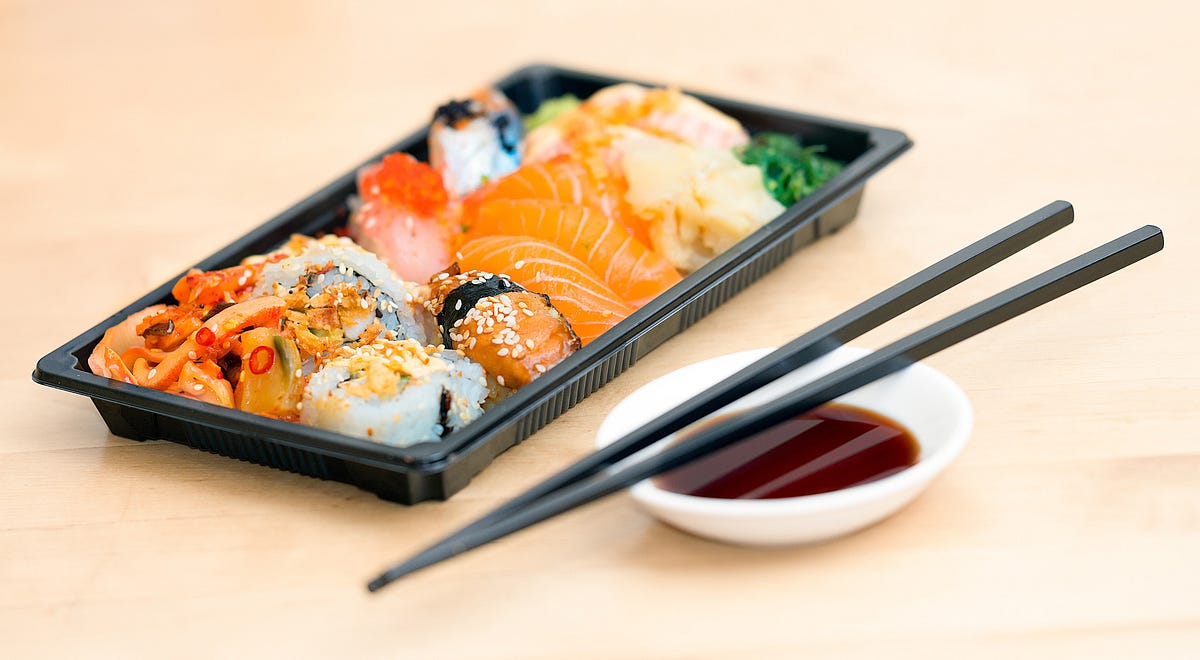Sushi has become a global culinary sensation, beloved for its delicate flavors, artistic presentation, and cultural richness. Whether you’re a first-timer or a seasoned sushi enthusiast, there are important things to note before eating sushi. Understanding these nuances not only enhances your dining experience but also ensures your health and safety. From sushi etiquette and ingredient freshness to dietary considerations and cultural customs, this comprehensive guide will walk you through everything you need to know before indulging in this iconic Japanese dish.
In this article, we’ll explore the fundamentals of sushi, highlight crucial tips for enjoying it safely and respectfully, and answer common questions that sushi lovers often have. Whether you’re dining at a high-end omakase restaurant or grabbing a quick bite at your local sushi bar, these insights will help you savor every bite with confidence and appreciation.
What is Sushi? A Brief Overview

Sushi is a traditional Japanese dish that combines vinegared rice (shari) with a variety of ingredients, most commonly raw or cooked fish, seafood, and vegetables. While many people associate sushi with raw fish, the term actually refers to the rice itself. Sushi comes in many forms, including:
- Nigiri: Slices of fish atop small mounds of rice.
- Maki: Rolled sushi, often wrapped in seaweed (nori).
- Sashimi: Thinly sliced raw fish, served without rice.
- Temaki: Hand-rolled cones of seaweed filled with rice and ingredients.
- Uramaki: Inside-out rolls, with rice on the outside and nori inside.
Understanding these basics will help you navigate any sushi menu with ease.
Things to Note Before Eating Sushi
1. Check the Freshness of the Fish
Why Freshness Matters
Freshness is paramount when it comes to sushi, especially since many varieties use raw fish. Consuming fish that isn’t fresh can lead to foodborne illnesses, including parasites and bacteria.
How to Assess Freshness
- Appearance: The fish should look glossy and vibrant, not dull or discolored.
- Smell: Fresh fish should have a clean, ocean-like aroma, not a strong “fishy” odor.
- Texture: The flesh should be firm and resilient, not mushy or slimy.
Where to Eat
Choose reputable sushi restaurants known for high standards of hygiene and quality. If you’re making sushi at home, buy fish labeled “sushi-grade” or “sashimi-grade” from trusted suppliers.
2. Understand Sushi Etiquette
Sushi is as much about tradition as it is about taste. Observing proper etiquette shows respect for the chef and the culture.
Key Sushi Etiquette Tips
- Use Your Hands or Chopsticks: Both are acceptable for eating sushi, but never rub chopsticks together as it suggests they are cheap.
- Dip Fish, Not Rice, in Soy Sauce: When eating nigiri, dip the fish side into the soy sauce to avoid soaking the rice.
- Eat in One Bite: Sushi pieces are designed to be eaten whole for the best flavor balance.
- Don’t Mix Wasabi in Soy Sauce: Place a small amount of wasabi directly on the sushi, if desired.
- Use Ginger as a Palate Cleanser: Eat pickled ginger between different types of sushi, not on top of the sushi.
3. Be Aware of Food Safety Concerns
Risks of Raw Fish
Raw fish can harbor parasites (like Anisakis) and bacteria (such as Salmonella or Vibrio). To minimize risk:
- Choose restaurants with high turnover and strict hygiene.
- Ensure fish is properly frozen before serving raw (as per FDA guidelines).
- Pregnant women, young children, the elderly, and immunocompromised individuals should avoid raw fish.
Allergies and Dietary Restrictions
- Fish/Shellfish Allergies: Always inform the chef of any allergies.
- Gluten Sensitivity: Some soy sauces contain wheat; ask for gluten-free options.
- Vegan/Vegetarian Options: Many sushi restaurants offer vegetable rolls or tofu-based sushi.
4. Know Your Sushi Types and Ingredients
Common Sushi Ingredients
- Fish: Tuna, salmon, yellowtail, eel, shrimp, and more.
- Vegetables: Cucumber, avocado, pickled radish (takuan), and carrots.
- Condiments: Soy sauce, wasabi, pickled ginger.
- Seaweed: Nori, used for wrapping rolls.
Popular Sushi Varieties
| Sushi Type | Description | Typical Ingredients |
|---|---|---|
| Nigiri | Fish on rice | Tuna, salmon, eel |
| Maki | Rolled sushi | Cucumber, avocado, crab |
| Sashimi | Raw fish slices | Tuna, yellowtail |
| Temaki | Hand roll | Rice, fish, veggies |
| Uramaki | Inside-out roll | California roll, spicy tuna |
5. Order and Eat Sushi in the Right Sequence
Traditionally, sushi is served in a specific order to enhance flavors:
- Lighter Flavors First: Start with white fish or delicate flavors.
- Richer Fish Next: Move on to fattier fish like salmon or tuna.
- Strong Flavors Last: End with eel or spicy rolls.
- Finish with Tamago (Sweet Omelet): A classic way to conclude your meal.
6. Use Condiments and Sauces Properly
- Soy Sauce: Use sparingly to avoid overpowering the sushi.
- Wasabi: A small dab enhances flavor but too much can mask the fish.
- Pickled Ginger: Cleanses the palate between bites.
7. Respect the Chef (Itamae)
If you’re sitting at the sushi bar, engage politely with the chef. Compliment their work, ask questions, and trust their recommendations. Avoid making special requests that alter traditional preparations unless you have dietary restrictions.
8. Be Mindful of Sustainability
Overfishing and unsustainable practices threaten many fish species. Choose sushi made with sustainable seafood options, such as:
- Albacore tuna (pole-caught)
- Farmed salmon (from responsible sources)
- Skipjack tuna
- Arctic char
Ask your chef or consult sustainability guides for more information.
Comparison Table: Sushi Etiquette vs. Common Mistakes
| Proper Sushi Etiquette | Common Mistake |
|---|---|
| Eat sushi in one bite | Biting sushi in half |
| Dip fish, not rice, in soy | Dunking rice side in soy sauce |
| Use ginger as palate cleanser | Placing ginger on top of sushi |
| Trust the chef’s order | Mixing wasabi into soy sauce |
| Use hands or chopsticks | Rubbing chopsticks together |
Additional Tips for an Enjoyable Sushi Experience
- Don’t Overorder: Sushi is best enjoyed fresh; order a few pieces at a time.
- Try Omakase: Let the chef decide your meal for a unique experience.
- Respect Local Customs: In Japan, tipping is not customary.
- Mind Your Alcohol Intake: Sake pairs well with sushi, but moderation is key.
FAQ
What is the safest sushi to eat for beginners?
Cooked sushi options like eel (unagi), shrimp (ebi), or tamago (sweet omelet) are safest for beginners. Vegetable rolls are also a good choice.
Can I eat sushi while pregnant?
It’s best to avoid raw fish during pregnancy due to the risk of parasites and bacteria. Opt for cooked or vegetarian sushi instead.
How do I know if a sushi restaurant is safe?
Look for clean facilities, high customer turnover, and good reviews. Reputable restaurants display their fish and maintain proper hygiene.
Is it rude to use your hands to eat sushi?
No, it is perfectly acceptable to eat sushi with your hands, especially nigiri and maki.
What is “sushi-grade” fish?
“Sushi-grade” or “sashimi-grade” indicates fish that has been frozen to kill parasites and is safe to eat raw. Always buy from trusted suppliers.
Should I tip at a sushi restaurant?
In Japan, tipping is not customary. In other countries, follow local tipping practices.
What is the difference between sushi and sashimi?
Sushi includes vinegared rice, while sashimi is just slices of raw fish without rice.
Conclusion
Sushi is more than just a meal—it’s an experience steeped in tradition, artistry, and attention to detail. By keeping these things to note before eating sushi in mind, you can fully appreciate the flavors, respect the culture, and ensure your own safety. Whether you’re a sushi novice or a seasoned aficionado, understanding etiquette, safety, and sustainability will elevate your enjoyment and make every sushi outing memorable.
Key Takeaways:
- Always prioritize freshness and hygiene.
- Respect sushi etiquette and the chef’s expertise.
- Be mindful of food safety and dietary restrictions.
- Choose sustainable seafood options when possible.
Sushi is a journey for the senses—embrace it with curiosity and respect, and you’ll be rewarded with a truly unforgettable dining experience.

